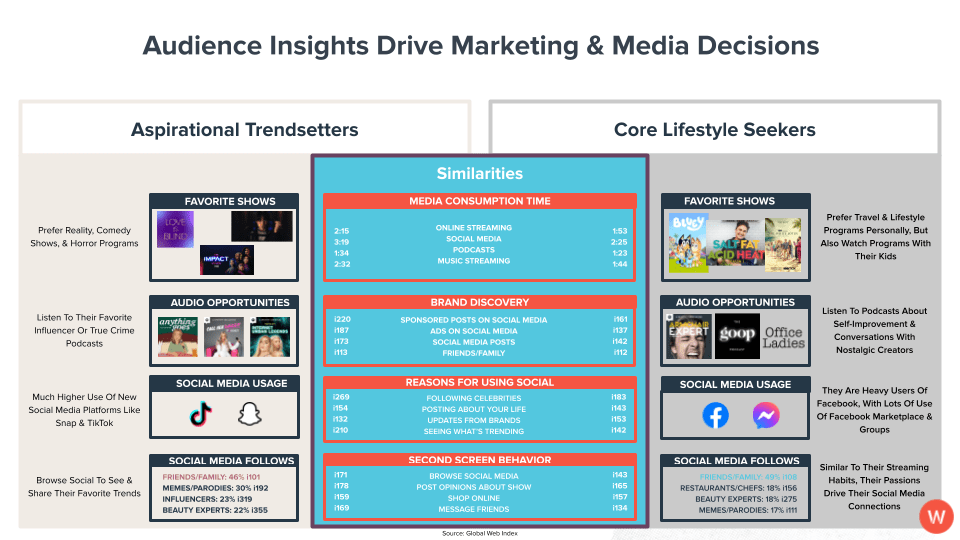Sure, we’ve all seen the exhaustive lists of the Barbie movie’s brand activations, partnerships, and marketing stunts. For most marketers, that level of investment into splashy campaigns isn’t on the radar, even for massive enterprise brands.
But there’s a lot more that marketers from brands of any kind can learn from Barbie simply by watching the movie. Spoiler alert: it’s not just that a little (okay, a lot of) pink can go a long way.
Because I’m the kind of person who always has marketing on my mind, I walked out of Barbie this weekend feeling joyful that such a weird movie exists, nostalgic for my own Barbie-filled childhood—and convinced that most marketers might miss the forest for the trees when it comes to Barbie (I swear I’m fun at parties!).
That may sound silly, but trust me. This isn’t a gimmick (or it’s a gimmick with some real meat behind it). Here are the three big lessons Barbie highlighted that will help get your marketing heels off the ground and stand above the competition.
Don’t treat your brand like it’s made of glass: take risks if you want big rewards
The first thing my friend said when we walked out of Barbie was “I can’t believe that Mattel let them do all of that.” And he was absolutely right.
Light non-plot spoilers ahead: Barbie constantly pokes fun at Mattel, its corporate executives, its female empowerment mission statements, and more. To play the fictional Mattel CEO, Will Ferrell channels the cluelessness of classic characters like Mugatu and Ron Burgundy to portray a specific sort of parody of masculine corporate culture trying to (literally) put Barbie back in her box.

Mattel clearly realized that to make a successful movie, they needed to give writers Greta Gerwig and Noah Baumbach the freedom to directly address and give the audience permission to laugh at some of the biggest criticisms leveled at both Mattel and Barbie itself, but that’s not an easy decision for any brand.
We often find that in-house marketers can get stuck in an over-protective, defensive stance when it comes to giving up any level of control. This is particularly clear when it comes to partnering with creators or influencers; too often, brands forego or miss opportunities on creator-driven platforms like TikTok because they want to retain a polished image for their brand, failing to understand that consumers are looking for different, more organic voices and perspectives than the brand itself.
The vast majority of marketers out there don’t have the kind of marketing budget that Barbie boasts (reportedly more than the movie itself cost), but taking strategic risks with your brand to connect with new audiences doesn’t necessarily cost more money. It just takes recognizing that today’s consumers might be looking for something different from brands and going outside of your comfort zone.
Social is a great place to start testing campaigns that flip your brand narrative. Experiment with messaging and creative that do something different or lean into the trust side of your creator and influencer relationships; after all, you are working with them because they are experts on their specific communities. What new insights or ideas can they bring to the table that can make your brand and marketing more effective?
Look for ways to showcase cultural alignment: dig into audience insights to get specific
As usual, the second I walked out of the Barbie movie, I immediately dug into the approximately 500 million think pieces that had been published about the movie to see if everybody else loved it as much as I did.
But it was actually a comment thread on Vulture that got me the most interested. It started with a comment from one user about how this movie was winning the box office because it was so precisely tailored to female millennial and Gen Z audiences, citing an exhaustive list of easter eggs and references that made the movie feel extremely specific to her particular experience—which is exactly how you want a potential customer to feel if they encounter your brand’s marketing.

As a millennial, I had felt the same way, but the first reply to her comment made me reconsider my experience. It was from a self-described boomer who immediately challenged that conclusion: she pointed out that the movie was full of knowing jokes, visuals, and lines that spoke directly to baby boomers who grew up with Barbie, and proceeded to share her own list of references.
The beautiful thing here (and another thing every marketer should learn from this movie) is that they are both right. Barbie was marketed as a movie for both people that love Barbie and those that hate her. But even more than that, it’s a movie that’s a different experience for different potential audiences, whether that’s generational or based on your appetite for all things Barbie.
In a digital world, you have more opportunities than ever to create, cultivate, and curate campaigns for specific audiences if you’re committed to digging into consumer insights and really getting to know your audience. That isn’t just about knowing what they want from your brand, it means understanding the wider cultural context through which they’re evaluating or reacting to your marketing.

How do they consume media? What are they looking for on specific channels? Is your copy leveraging a lexicon that includes the right references, vocabulary, and cultural touchstones to let people know this is where they belong? Are your images and videos incorporating styles, references, and voices that reflect your audience at a deep level, so they feel seen and understood by or even part of your brand?
That’s how you attract new customers and how you grow loyalty in your existing customers, and making the commitment to understand your audience will deliver massive long-term value for your business.
Take a stand if it makes sense for your brand: don’t be afraid of the right controversy
The final marketing lesson Barbie highlighted for me is the potential value of controversy. This connects to the first point (take risks!) but there was specific blowback on Barbie from certain corners, including conservative politicians like Matt Gaetz taking issue with its skewering of patriarchy and progressive voices on channels like NPR questioning Barbie’s feminist bona fides.
Controversy can feel like anathema to what marketing is all about, but you need to remember (see lesson #2 about knowing your audience) that your brand can’t be everything to everyone. And consumers increasingly want the brands they spend money on to stand for something. In fact, according to McKinsey, brands that make ESG (Environmental, Social, Governance) claims averaged 28% cumulative growth over the past five years vs. just 20% for products that made no such claims.
In a post-Bud Light backlash world, it can feel too scary to make a stand around a particularly hot-button issue. In an extremely polarized cultural environment, every messaging choice has the potential to blow up, which is why you need to understand where it makes sense for your brand to weigh in. But it also has the potential to help you win customers for life.

Sam Adams, for example, has built LGBTQ+ support and Pride messaging into their brand’s value proposition for a long time without facing the same pushback, because it doesn’t seem opportunistic. The brand can act as a vocal ally for marginalized groups because that position represents a natural evolution of their brand values: togetherness, individuality, and respect.
ESG decisions need to be thoroughly vetted before getting the outputs in front of consumers, and you also need to consider where those messages will show up; going too light or too hard on a given issue on the wrong platform can come with risks. Gestures and messages that are only tied to a specific holiday or other period can come across as disingenuous; consumers demand action and authenticity. Corporate social responsibility can be a powerful differentiator for brands in competitive spaces, but efforts have to flow naturally from the brand’s identity.
Consumers respect brands that stand for something and turn away from the ones who try to fake it. Be willing to dive into the conversation about key areas, especially where they are close to your brand’s heart and places you’re already investing, like sustainability or diversity and inclusion.







Responses